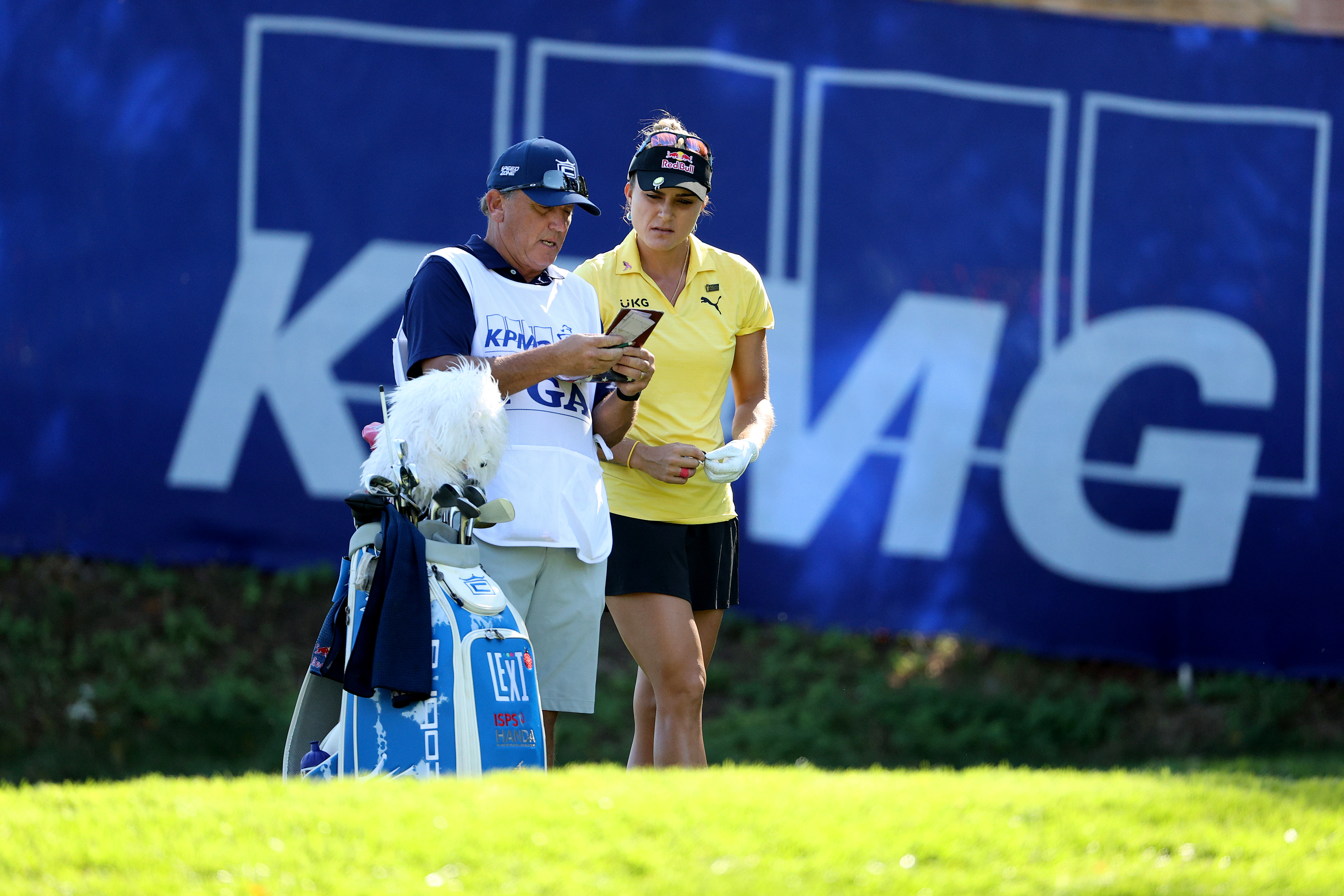ATLANTA – The question from KPMG was simple: What’s the LPGA’s No. 1 pain point?
Answer: The lack of statistics and analytics.
Seven years ago, KPMG partnered with the PGA of America to title sponsor the revamped Women’s PGA with a commitment to take the championship to premiere courses where men have typically played. This week marks the first time a women’s major has been held on the Highlands Course at Atlanta Athletic Club. Upcoming venues include Congressional (2022) and Baltusrol (2023).
with a commitment to take the championship to premiere courses where men have typically played. This week marks the first time a women’s major has been held on the Highlands Course at Atlanta Athletic Club. Upcoming venues include Congressional in 2022 and Baltusrol in 2023.
The purse size has doubled to $4.5 million. Weekend coverage will be on NBC. In the Women’s Leadership Summit, KPMG created a model that tournament after tournament on the LPGA was eager to follow.
But KPMG, a Hall of Fame kind of LPGA partner, wanted to do more. Closing the outrageously wide analytics chasm between the men’s and women’s game seemed a natural fit for the goal of continuing to elevate the women’s game.
“We do data and analytics for a living,” said Paul Knopp, KPMG U.S. Chair and CEO.
The KPMG Performance Insights technology platform launches this week at Atlanta Athletic Club, though players and caddies took part in a soft launch, gathering data in the weeks leading up to the event.
The official release for the program described the LPGA’s current stats program as “similar to what some weekend golfers calculate after their rounds.” That’s precisely accurate.
“We were surprised at that disparity,” said Knopp, “and we very much wanted to be a partner in wanting to do something about it.”
The KPMG program will be similar to what’s on the European Tour, with caddies recording shots, club selections and the lie of every shot. They’ll turn in a special scorecard after every round and get paid a stipend for the efforts. KPMG is covering that, too.
Overall strokes gained and strokes gained by game area (off the tee, approach, around the green, putting) will be available as well as deeper insights into individual strokes gained by 25-yard increments and individual shots taken. Players, fans and media will know how close players hit it on average from certain distances. There will be shot dispersion charts, average birdie putt length and performance indexing over time against the field.
It’s not ShotLink, but it’s a quantum leap in the right direction.
Preaching the need for better analytics
KPMG ambassador Stacy Lewis stayed with COO Laura Newinski while competing in the Gainbridge LPGA at Lake Nona and talked at length with her about how stats would not only help players better identify strengths and weaknesses, but also vastly improve TV and print coverage of the tour.
“It will let people know how good we are,” said Lewis. “It creates interest and gives announcers something to talk about instead of what outfit we have on, or whether she’s happy or not. (Now it’s) how good her putting numbers are or how good she’s driving it this week, and you can back it up with something.”

Anna Nordqvist at the 2020 KPMG Women’s PGA Championship at Aronimink Golf Club on Oct. 10, 2020 in Newtown Square, Pennsylvania. Photo by Patrick Smith/Getty Images
For years Golf Channel’s Karen Stupples has been preaching the need for better analytics on the LPGA. Why should sports fans simply believe what someone in the booth says when there are no numbers to prove it?
“In this age of technology, everybody is looking at ball speed and club speed and spin rates,” said Stupples at the 2021 U.S. Women’s Open. “It’s a numbers game. And when there are no numbers, it makes it very subjective.
“I think people downplay just how good they are because there’s no way to put a fixed number on how good they are. They’re trying to take our word for it, but why would they take our word for it?”
Some players, like Brittany Altomare, have been keeping their own detailed stats for years. Altomare’s father Tom spent 32 years working at HP and used his penchant for numbers to create a stats system at the request of Altomare’s coach Justin Sheehan. Brittany inputs her own numbers each week. Tom analyzes the trends and puts together a summary. Sheehan breaks it down and delivers the message.
They could analyze 250 shots taken with an 8-iron, for example, and see how far she hits it from the hole on average and how often she converts for birdie.
For coaches who aren’t out every week watching players, this kind of information is invaluable for training.
Santiago Carranza, a former software engineer who now makes a living in finance, started a detailed stats project out of necessity to help girlfriend Gaby Lopez look for areas of improvement. It evolved into ABX Tour, an analytics system that was used by a number of players on tour who were looking for a benchmark of standards so that players can put context to their own personal stats.
Now there’s a standardized system in play for the entire tour that all partners will be able to access.
“When you get actual physical numbers that tell you how good these players are,” said Stupples, “people have to buy in. They can’t dismiss figures.”

